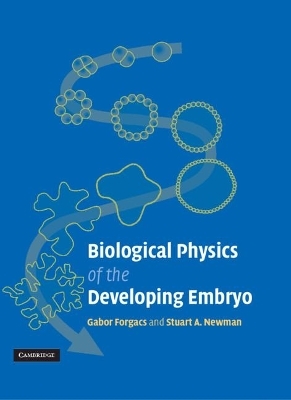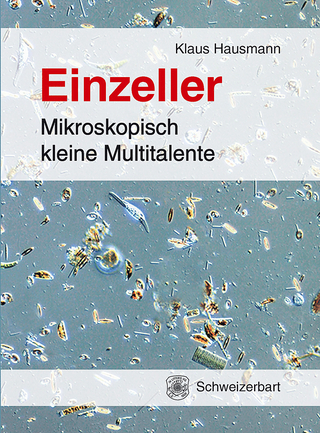
Biological Physics of the Developing Embryo
Seiten
2005
Cambridge University Press (Verlag)
978-0-521-78337-8 (ISBN)
Cambridge University Press (Verlag)
978-0-521-78337-8 (ISBN)
This book shows how physics can be used to analyze the changes that cells and tissues undergo during development. Major stages and components of the biological development process are introduced and analyzed. Full-color throughout, this comprehensive textbook is suitable for graduate and upper-undergraduate courses in physics and biology.
During development cells and tissues undergo changes in pattern and form that employ a wider range of physical mechanisms than at any other time in an organism's life. This book shows how physics can be used to analyze these biological phenomena. Written to be accessible to both biologists and physicists, major stages and components of the biological development process are introduced and then analyzed from the viewpoint of physics. The presentation of physical models requires no mathematics beyond basic calculus. Physical concepts introduced include diffusion, viscosity and elasticity, adhesion, dynamical systems, electrical potential, percolation, fractals, reaction-diffusion systems, and cellular automata. With full-color figures throughout, this comprehensive textbook teaches biophysics by application to developmental biology and is suitable for graduate and upper-undergraduate courses in physics and biology.
During development cells and tissues undergo changes in pattern and form that employ a wider range of physical mechanisms than at any other time in an organism's life. This book shows how physics can be used to analyze these biological phenomena. Written to be accessible to both biologists and physicists, major stages and components of the biological development process are introduced and then analyzed from the viewpoint of physics. The presentation of physical models requires no mathematics beyond basic calculus. Physical concepts introduced include diffusion, viscosity and elasticity, adhesion, dynamical systems, electrical potential, percolation, fractals, reaction-diffusion systems, and cellular automata. With full-color figures throughout, this comprehensive textbook teaches biophysics by application to developmental biology and is suitable for graduate and upper-undergraduate courses in physics and biology.
Introduction; 1. The cell: fundamental unit of developmental systems; 2. Cleavage and blastula formation; 3. Cell states: stability, oscillation, differentiation; 4. Cell adhesion, compartmentalization and lumen formation; 5. Epithelial morphogenesis: gastrulation and neurulation; 6. Mesenchymal morphogenesis; 7. Pattern formation: segmentation, axes and asymmetry; 8. Organogenesis; 9. Fertilization: generating one living dynamical system from two; 10. Evolution of developmental mechanisms; Glossary; References; Index.
| Erscheint lt. Verlag | 24.11.2005 |
|---|---|
| Zusatzinfo | 110 Line drawings, color |
| Verlagsort | Cambridge |
| Sprache | englisch |
| Maße | 195 x 252 mm |
| Gewicht | 928 g |
| Themenwelt | Medizin / Pharmazie ► Medizinische Fachgebiete |
| Naturwissenschaften ► Biologie ► Zellbiologie | |
| Naturwissenschaften ► Physik / Astronomie | |
| ISBN-10 | 0-521-78337-2 / 0521783372 |
| ISBN-13 | 978-0-521-78337-8 / 9780521783378 |
| Zustand | Neuware |
| Haben Sie eine Frage zum Produkt? |
Mehr entdecken
aus dem Bereich
aus dem Bereich
mikroskopisch kleine Multitalente
Buch | Hardcover (2024)
Schweizerbart'sche, E. (Verlag)
29,90 €


